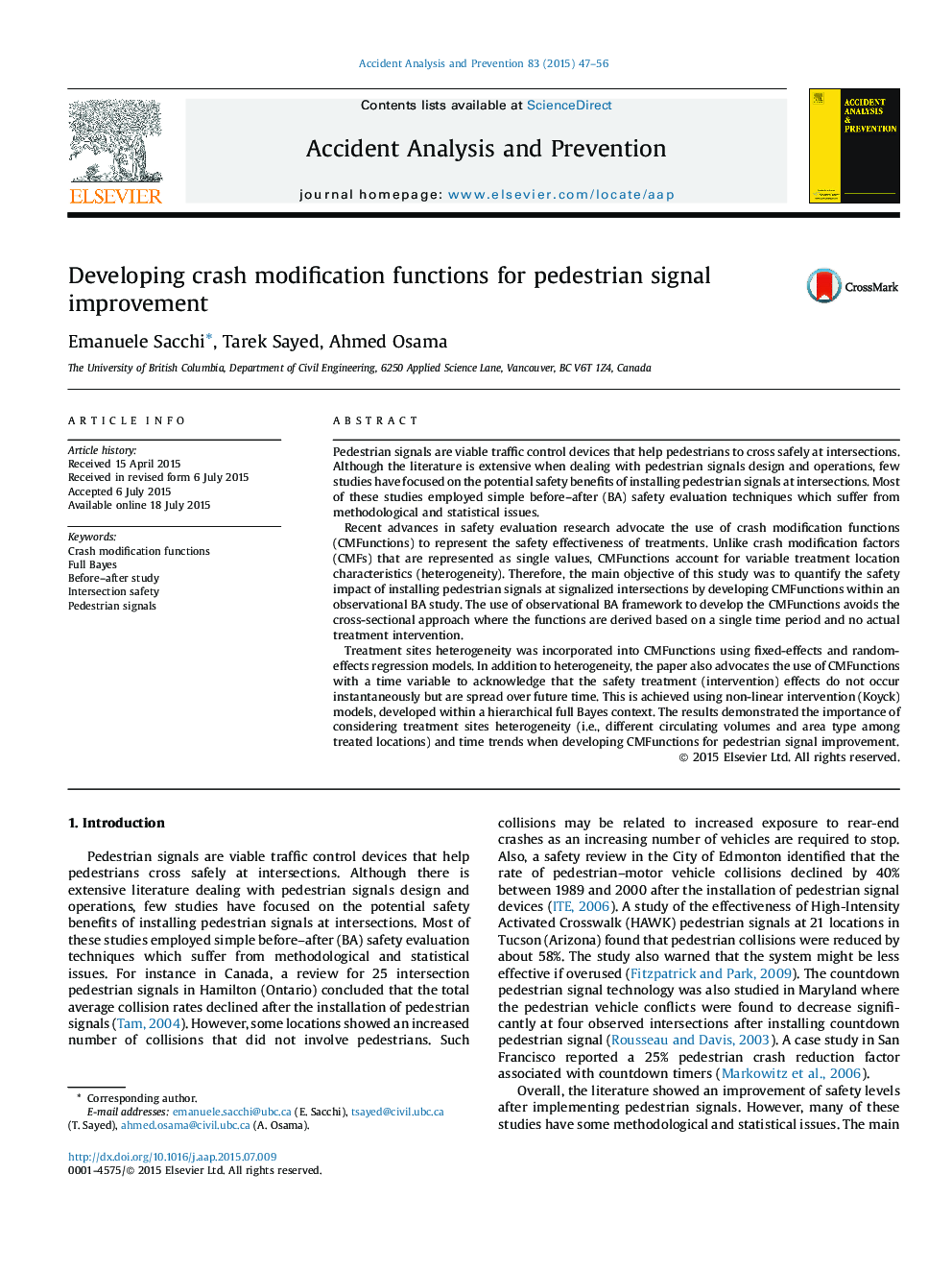| کد مقاله | کد نشریه | سال انتشار | مقاله انگلیسی | نسخه تمام متن |
|---|---|---|---|---|
| 572098 | 1452914 | 2015 | 10 صفحه PDF | دانلود رایگان |
• The safety impact of installing pedestrian signals at signalized intersections in British Columbia (Canada) was quantified by means of crash modification factors (CMFs) and functions (CMFunctions).
• Simple CMFs do not include variable treatment location characteristics (heterogeneity).
• A novel method that incorporates heterogeneity into CMFunctions from an observational before–after study was applied.
• CMFunctions developed from fixed-effects and random-effects regression models were compared and discussed.
• The study also advocates the use of CMFunctions with a time trend variable to acknowledge that the safety treatment (intervention) effects are spread over future time.
Pedestrian signals are viable traffic control devices that help pedestrians to cross safely at intersections. Although the literature is extensive when dealing with pedestrian signals design and operations, few studies have focused on the potential safety benefits of installing pedestrian signals at intersections. Most of these studies employed simple before–after (BA) safety evaluation techniques which suffer from methodological and statistical issues.Recent advances in safety evaluation research advocate the use of crash modification functions (CMFunctions) to represent the safety effectiveness of treatments. Unlike crash modification factors (CMFs) that are represented as single values, CMFunctions account for variable treatment location characteristics (heterogeneity). Therefore, the main objective of this study was to quantify the safety impact of installing pedestrian signals at signalized intersections by developing CMFunctions within an observational BA study. The use of observational BA framework to develop the CMFunctions avoids the cross-sectional approach where the functions are derived based on a single time period and no actual treatment intervention.Treatment sites heterogeneity was incorporated into CMFunctions using fixed-effects and random-effects regression models. In addition to heterogeneity, the paper also advocates the use of CMFunctions with a time variable to acknowledge that the safety treatment (intervention) effects do not occur instantaneously but are spread over future time. This is achieved using non-linear intervention (Koyck) models, developed within a hierarchical full Bayes context. The results demonstrated the importance of considering treatment sites heterogeneity (i.e., different circulating volumes and area type among treated locations) and time trends when developing CMFunctions for pedestrian signal improvement.
Journal: Accident Analysis & Prevention - Volume 83, October 2015, Pages 47–56
